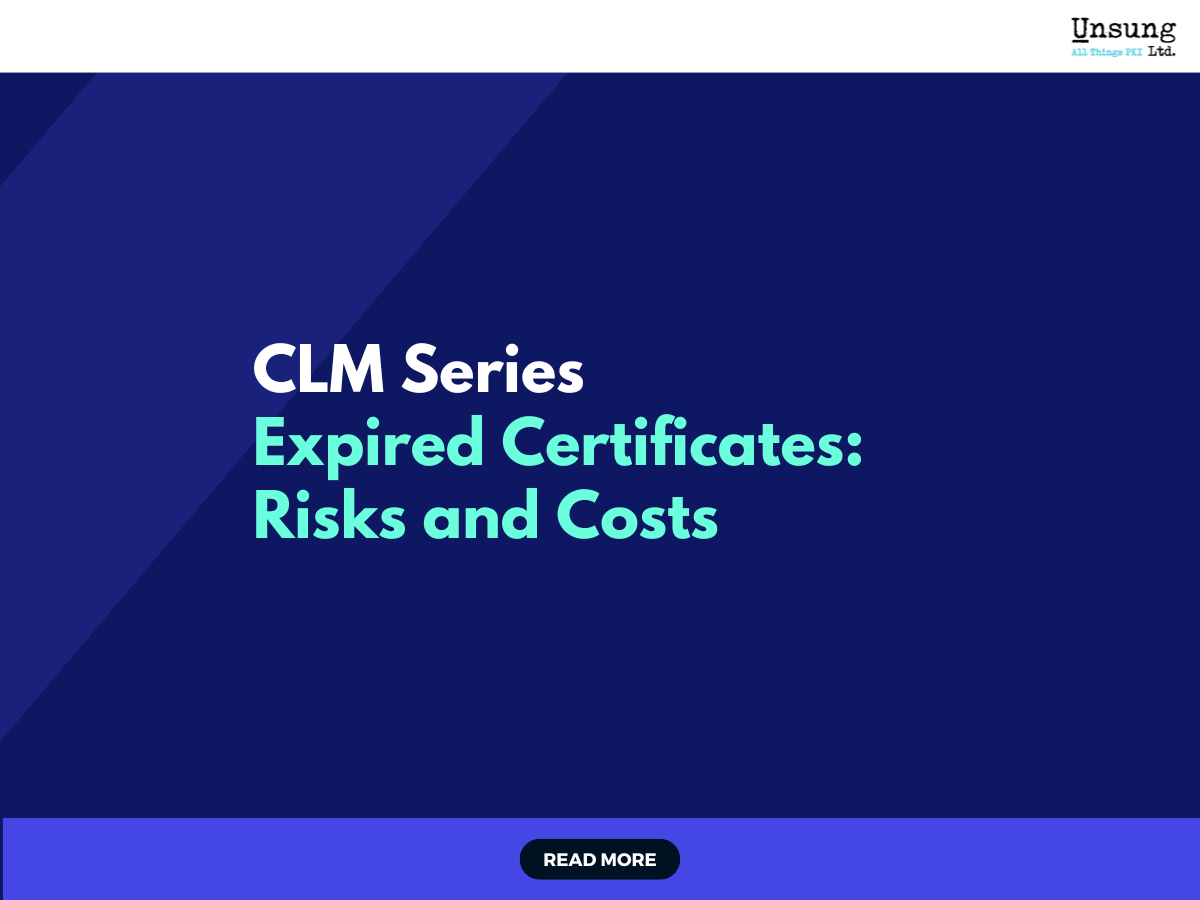The Real Cost of Expired Certificates (and How CLM Prevents It)
Introduction
An expired digital certificate can cause more than just a technical hiccup—it can trigger significant outages, disrupt critical services, and erode customer confidence. These certificates are integral to securing systems, encrypting communications, and validating identities, yet they are often neglected until an incident forces attention. As organisations expand their digital infrastructure, the risk of an overlooked certificate grows.
The Impact of Expired Certificates
When a certificate expires, the consequences are immediate and visible:
- Websites can become inaccessible, resulting in lost traffic and sales opportunities.
- Secure transactions may fail, halting payment processing or blocking access to sensitive systems.
- Applications may lose connectivity, interrupting internal workflows and automated processes.
- Customers and partners may lose trust, particularly if they encounter security warnings or failed connections.
The September 2020 Microsoft Teams outage serves as a clear warning. An expired authentication certificate caused a three-hour global service disruption, impacting millions of users. This incident underscores that even organisations with sophisticated IT operations are not immune to the operational and reputational consequences of poor certificate management.
The Financial Cost
Gartner estimates the average cost of IT downtime at $5,600 per minute, with some outages running into hundreds of thousands of pounds per hour. For customer-facing platforms, the losses extend beyond direct revenue. Compliance violations can trigger regulatory penalties, while the erosion of brand trust can have a longer-lasting impact, influencing customer decisions long after systems have been restored.
Why Expiry Happens
Certificate expiry issues often stem from fragmented oversight. In many organisations, certificates are:
- Tracked manually, often in spreadsheets that depend on regular human updates.
- Managed across multiple teams, such as development, security, and operations, with no single point of accountability.
- Embedded in complex systems, where their presence may not be obvious until a service stops working.
As certificate lifetimes continue to shorten—potentially moving to 90-day validity as proposed by industry leaders like Google—the operational burden increases significantly. This compressed renewal cycle leaves less margin for error, making manual tracking an even greater liability.
How CLM Prevents Expiry Issues
Certificate Lifecycle Management (CLM) solutions address these risks through automation and centralisation. A robust CLM system can:
- Maintain a complete and accurate inventory of all certificates across on-premises, cloud, and hybrid environments.
- Monitor expiry dates in real time, enabling proactive action rather than reactive crisis management.
- Automate renewal and replacement processes well before deadlines, reducing reliance on manual intervention.
- Provide alerts and reporting, ensuring stakeholders are aware of upcoming expirations and policy compliance status.
ConclusionExpired certificates are an entirely preventable cause of costly downtime and reputational harm. By adopting a CLM solution, organisations can ensure continuous certificate coverage, eliminate last-minute renewals, and maintain the trust of customers, partners, and regulators.



